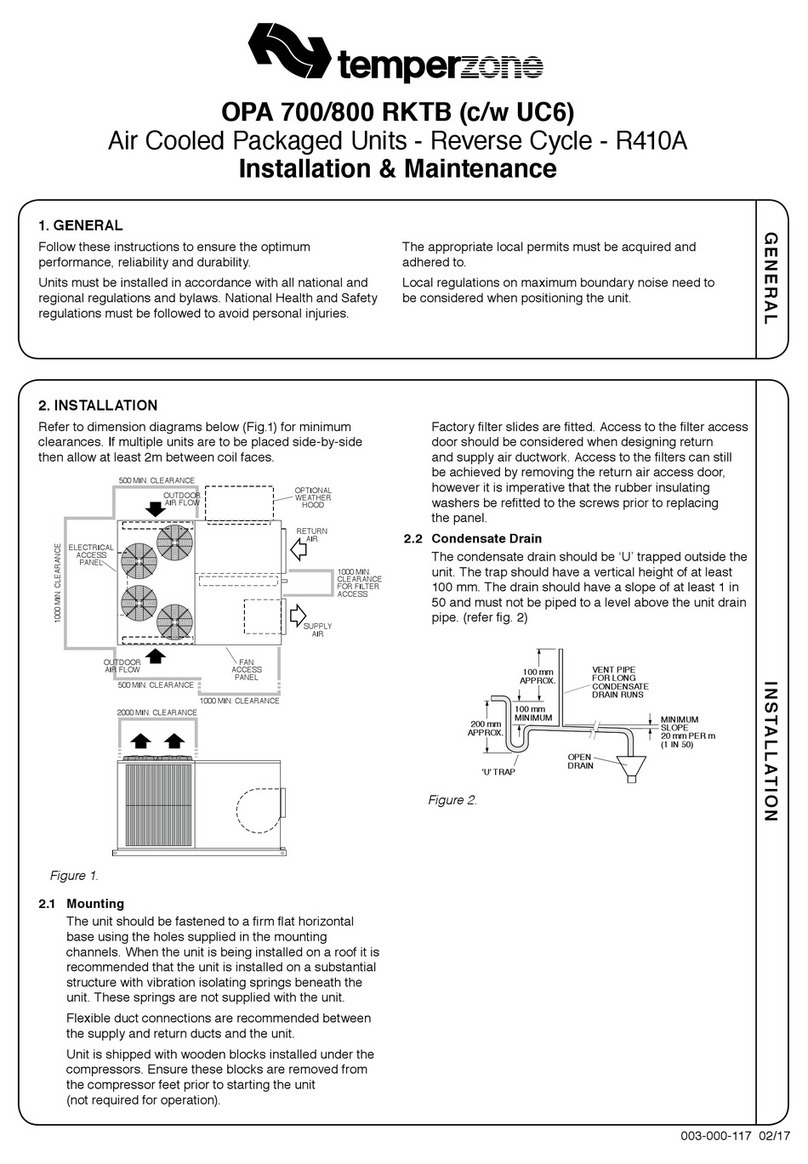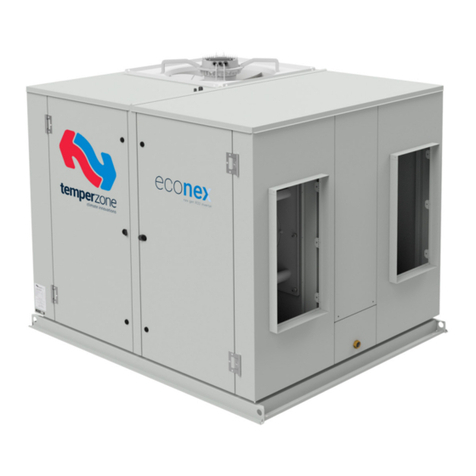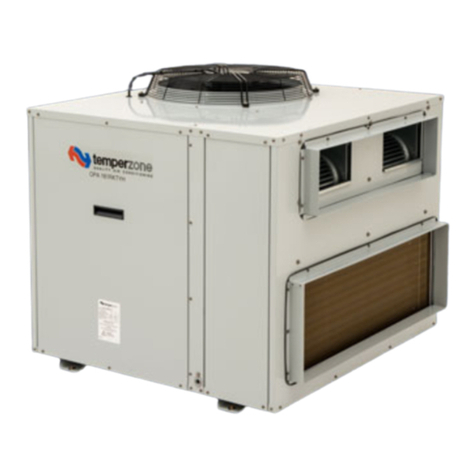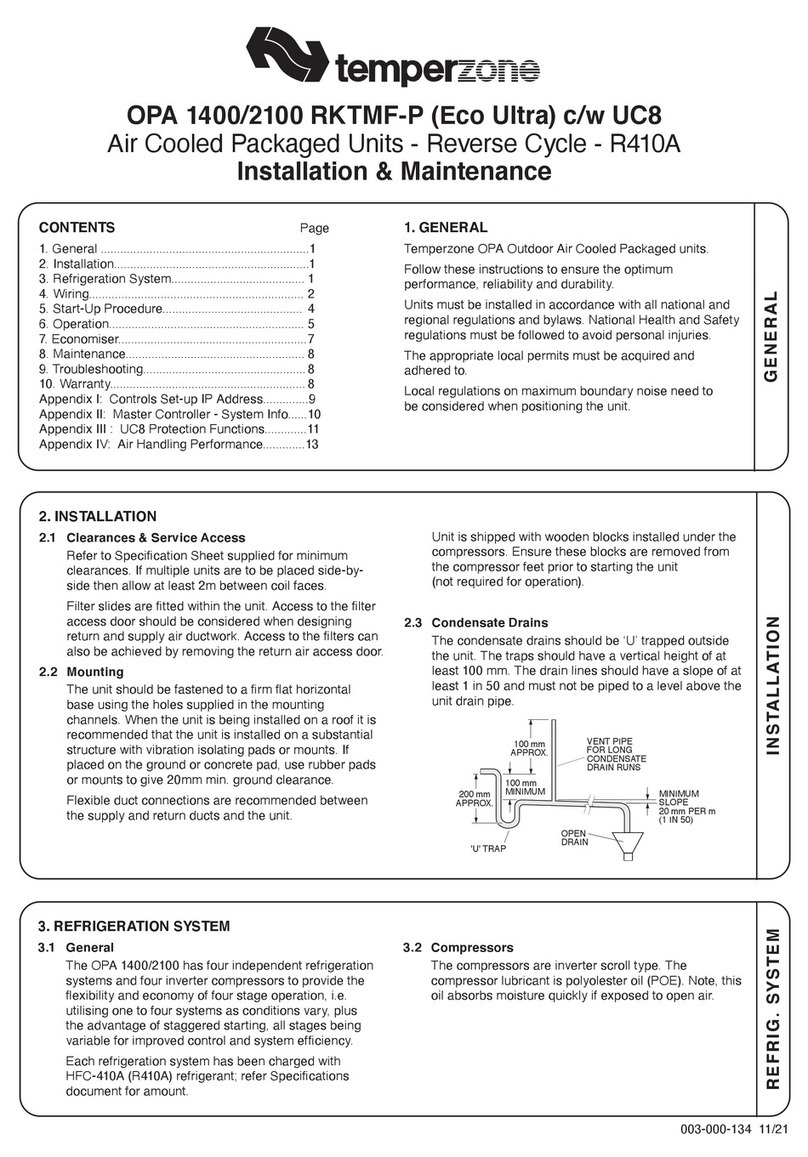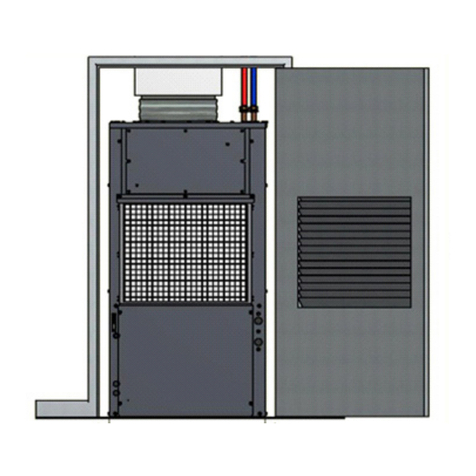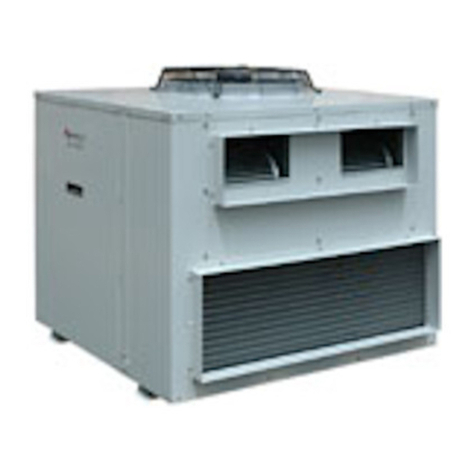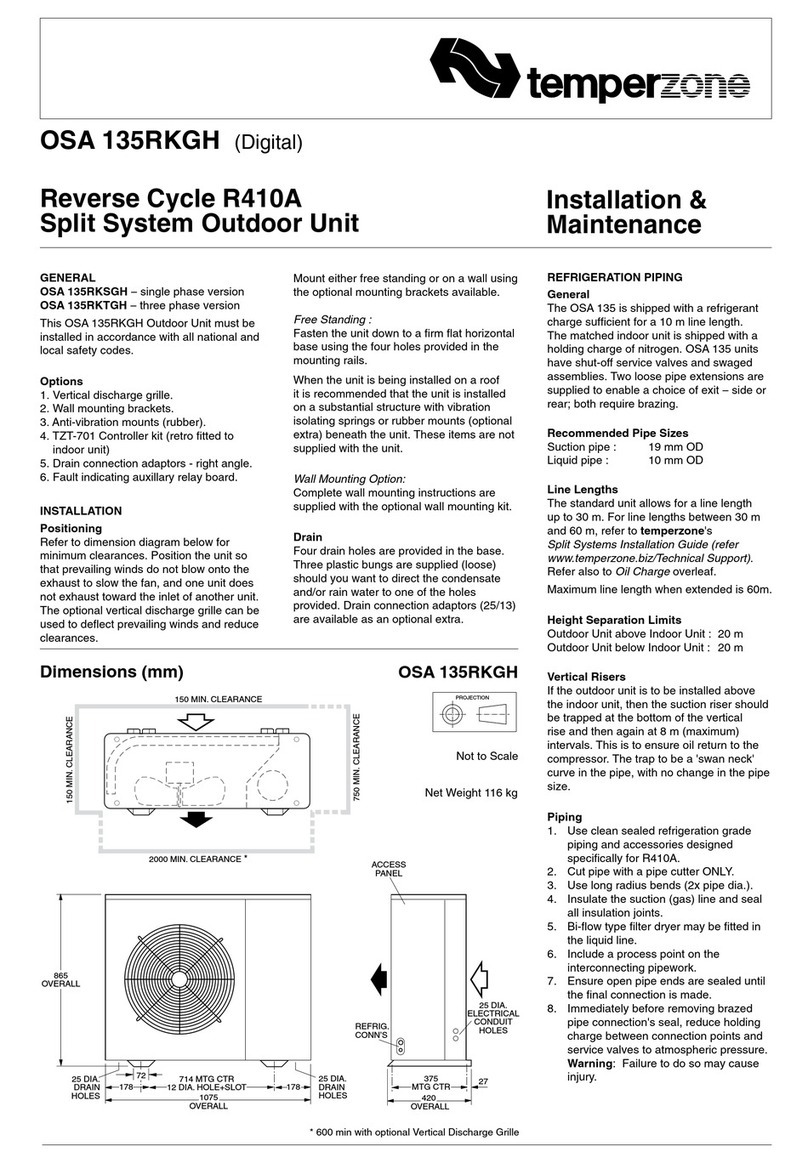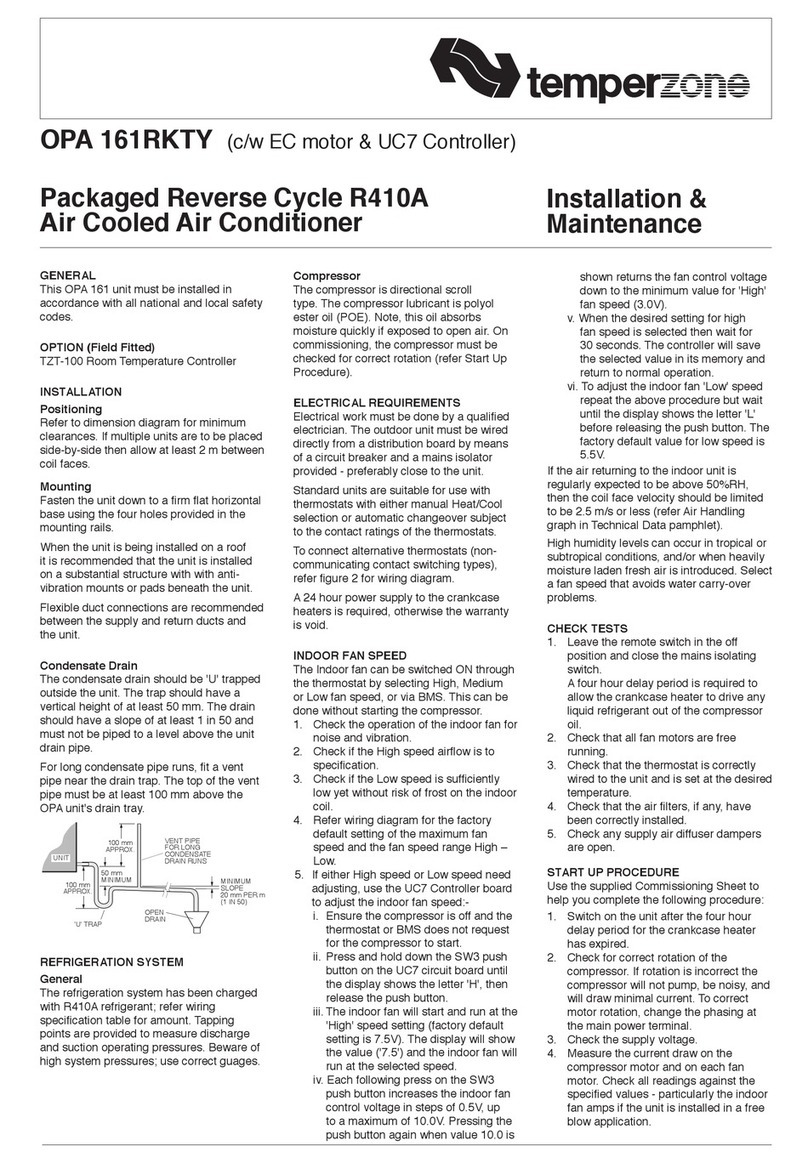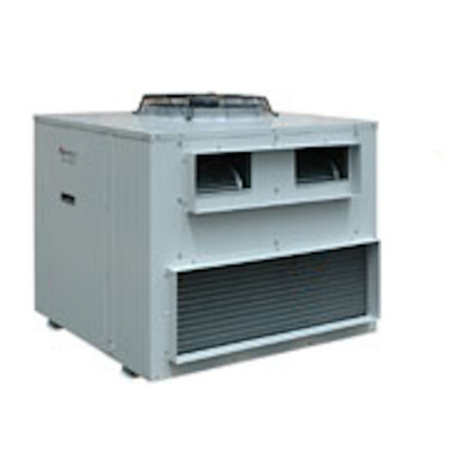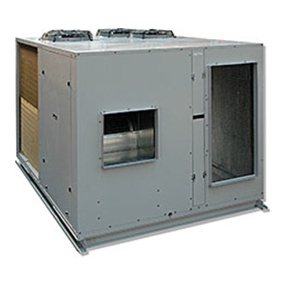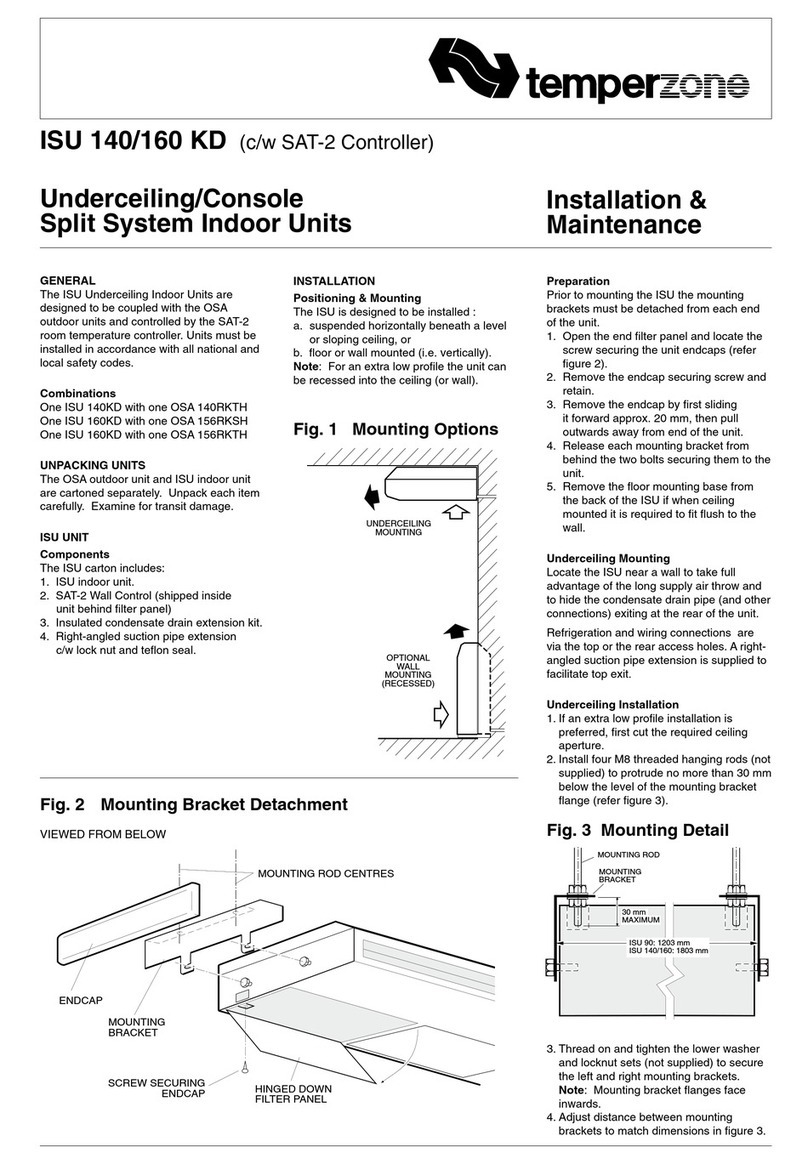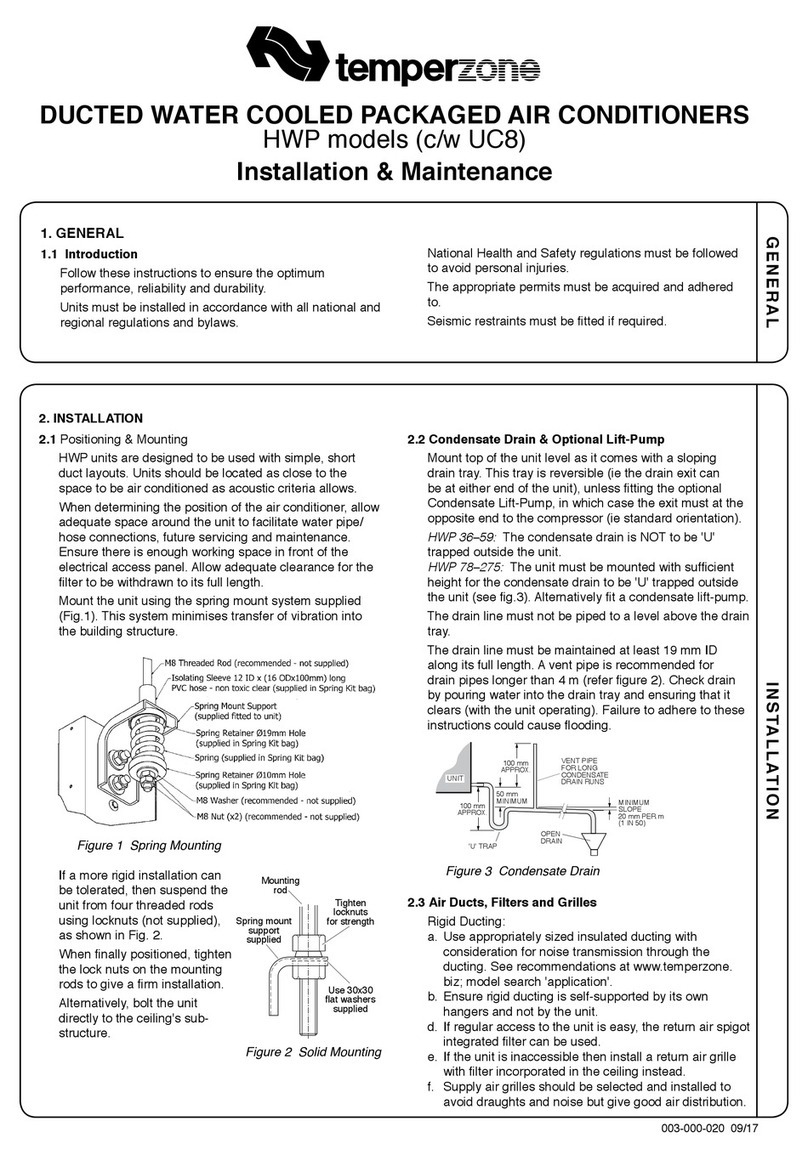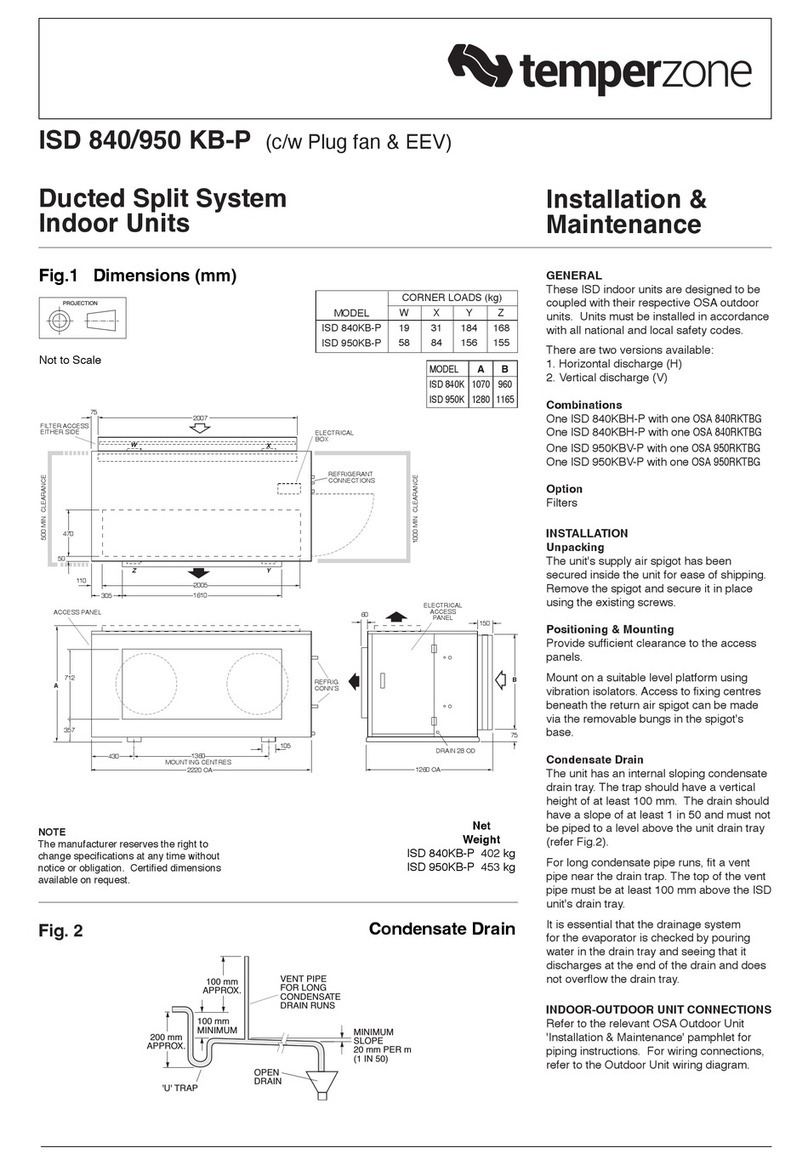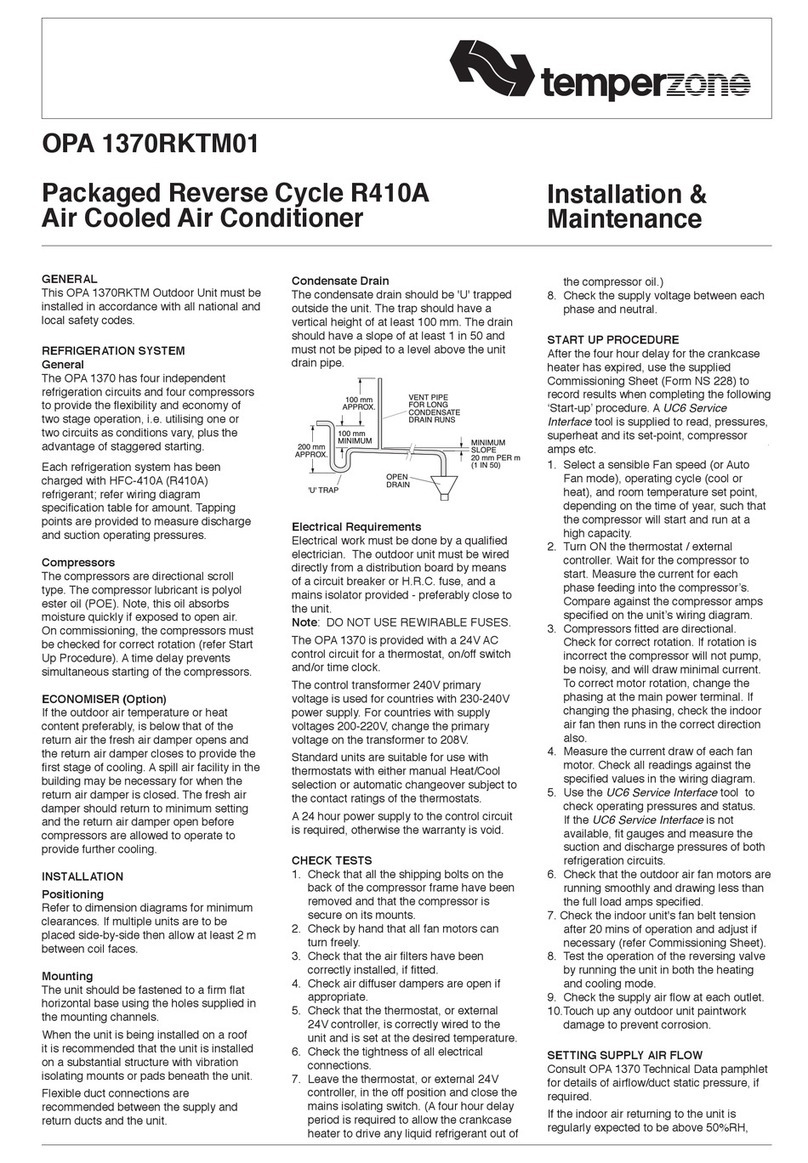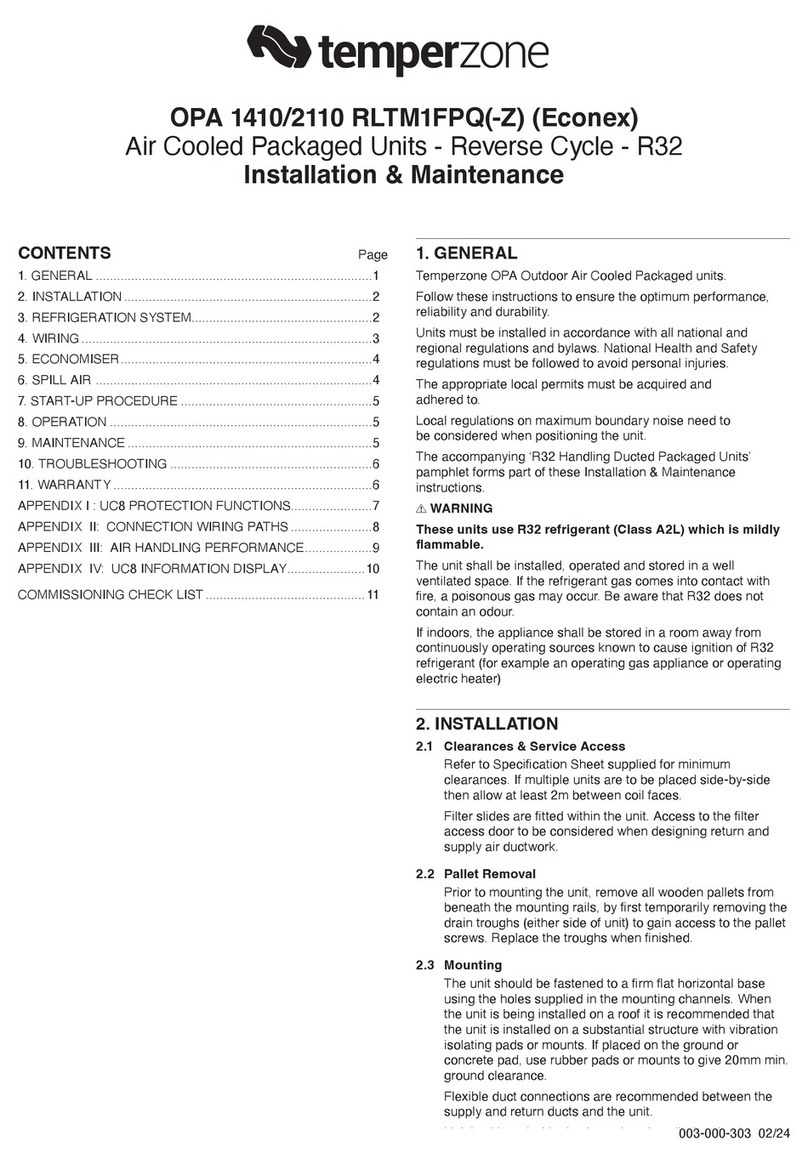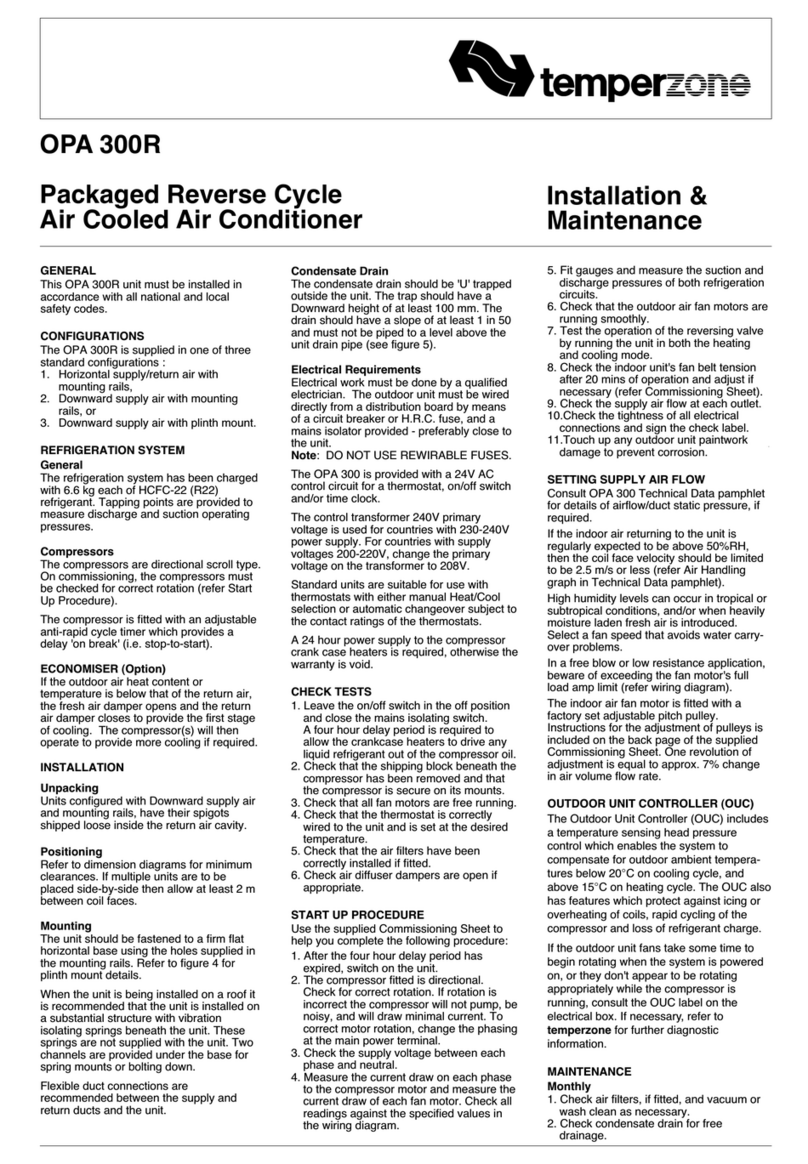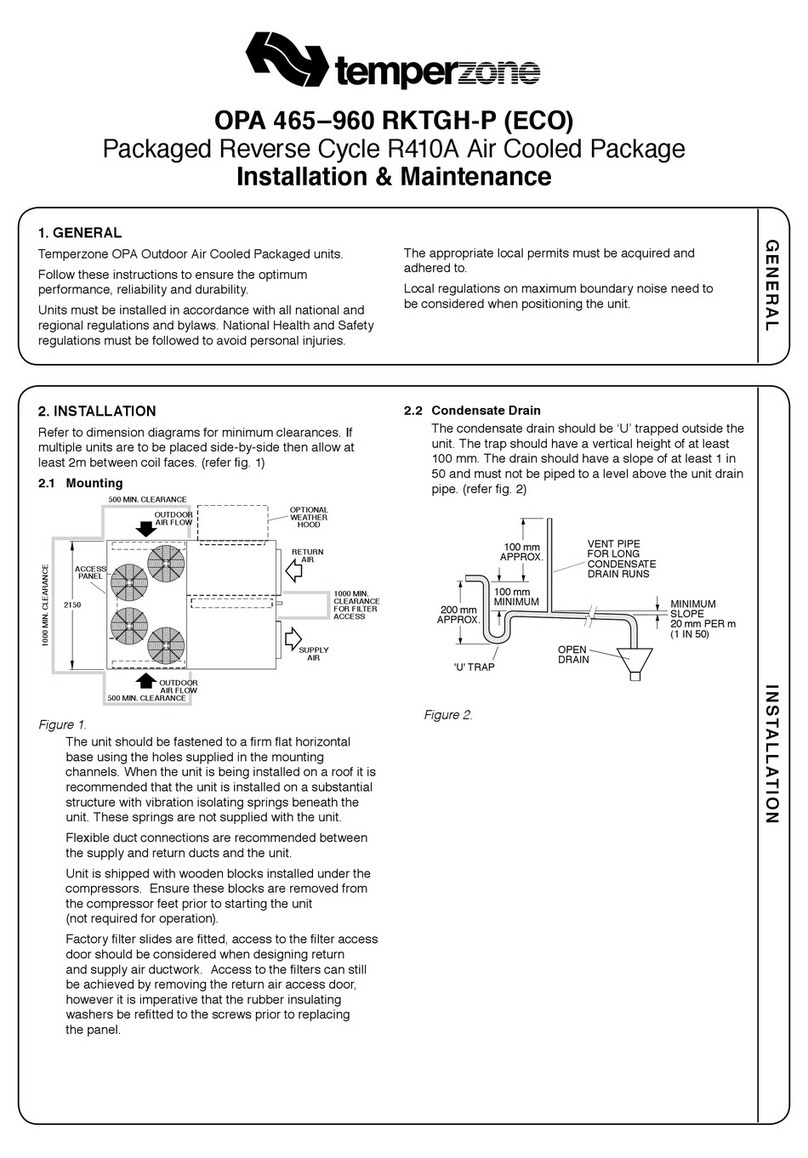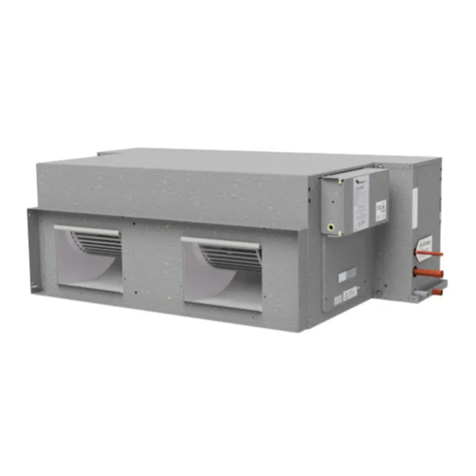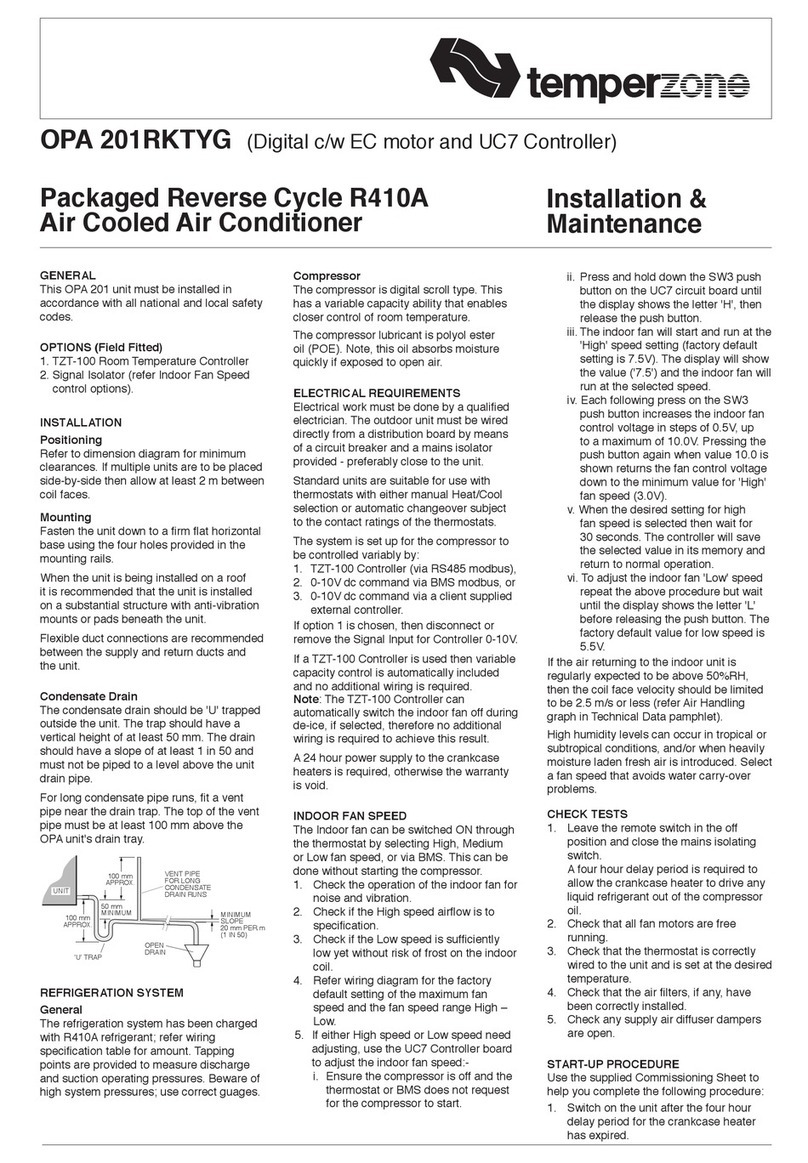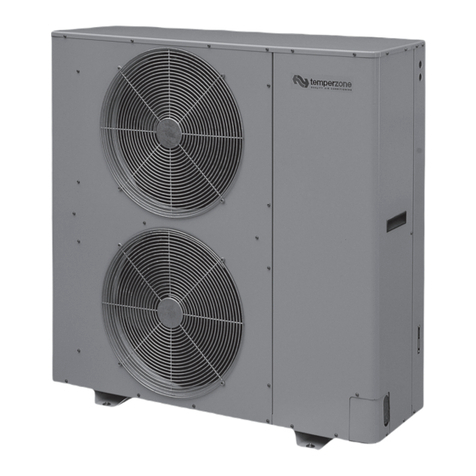OUTDOOR UNIT CONTROLLER (OUC)
(OSA 300R only)
The Outdoor Unit Controller (OUC) includes
a temperature sensing head pressure
control which enables the system to
compensate for outdoor ambient tempera-
tures below 20°C on cooling cycle, and
above 15°C on heating cycle. The OUC also
has features which protect against icing or
overheating of coils, rapid cycling of the
compressor and loss of refrigerant charge.
If the outdoor unit fans take some time to
begin rotating when the system is powered
on, or they don't appear to be rotating
appropriately while the compressor is
running, consult the OUC label on the
electrical box. If necessary, refer to
temperzone for further diagnostic
information.
MAINTENANCE
Weekly For First Four Weeks
1. Check indoor unit air filters (if fitted) and
vacuum or wash clean as necessary.
2. Check condensate drain for free
drainage.
3. Check compressor compartment for oil
stains indicating refrigerant leaks.
4. Check tightness of electrical
connections.
Three Monthly (or every 1200 hrs of operation)
Check the indoor unit's fan belt tension and
adjust if necessary.
Six Monthly
1. Check the tightness of all fan and motor
mountings.
2. Check the tightness of electrical
connections
3. Check that fan motors are free running.
4. Check suction and discharge operating
pressures.
5. Replace indoor unit air filters (if fitted).
6. Check condensate drain for free
drainage.
Yearly
1. Check all refrigerant piping for chafing
and vibration.
2. Check the operation of electric heaters if
fitted.
3. Check air supply at all diffusers.
4. Check for excessive noise and vibration
and correct as necessary.
5. Check for insulation and duct damage
and repair as necessary.
6. Remove lint and dust accumulation from
outdoor coil fins.
7. Touch up any outdoor unit paintwork
damage to prevent corrosion.
NOTE
The manufacturer reserves the right to
change specifications at any time without
notice or obligation. Certified dimensions
available on request.
Refer to separate pamphlet for approved
thermostats, or contact the manufacturer's
nearest sales office.
A 24 hour power supply to the compressor
crank case heaters is required, otherwise
the warranty is void.
SYSTEM CHECK TESTS
1. Leave the remote switch in the off
position and close the mains isolating
switch.
A four hour delay period is required to
allow the crankcase heater to drive any
liquid refrigerant out of the compressor
oil.
2. Check that all fan motors are free
running.
3. Check that the thermostat is correctly
wired to the unit and is set at the desired
temperature.
4. Check that the air filters, if any, have
been correctly installed.
5. Check any supply air diffuser dampers
are open.
START UP PROCEDURE
Use the supplied Commissioning Sheet to
help you complete the following procedure:
1. After the four hour delay period has
expired switch on the unit.
2. Check the supply voltage.
3. Fit gauges and measure the suction and
discharge pressures.
4. Check for correct rotation of the
compressors. If rotation is incorrect a
compressor will not pump, be noisy, and
will draw minimal current. To correct
motor rotation, change the phasing at
the main power terminal.
5. Measure the current draw on each
phase to the compressor motor and
measure the current draw of each fan
motor. Check all readings against the
specified values - particularly the indoor
fan amps if the unit is installed in a free
blow application.
6. Test the operation of the high pressure
safety control by switching off the
outdoor unit's fan.
7. Test the operation of the reversing valve
by running the unit in both the heating
and cooling mode (OSA 300R only).
8. Check that the air flow over the outdoor
unit's coil is adequate and that the fan is
running smoothly.
9. Check the superheat - refer charging
procedure.
10. Check the supply air flow at each outlet.
11. Touch up any outdoor unit paintwork
damage to prevent corrosion.
4. Leak check all brazed and fitted joints.
IMPORTANT :
Step 9 of the 'Start Up Procedure' requires
you to check that the superheat on the
suction line (where it enters the Outdoor
Unit) is between 3°C – 5°C on cooling cycle
with an indoor air temperature in the range
21°– 27°C and outdoor air temperature in
the range 24°– 35°C. If the conditions of the
day do not allow this, use the heating cycle
(on a reverse cycle unit) or other heat
source to raise the indoor air temperature to
about 24°C and blank off the outdoor coil to
raise the head pressure to 240–280 psig
(1750–1950 kPag). Alter charge up or down
to establish correct superheat.
WARNING:
This unit is designed for use ONLY with the
refrigerant HCFC-22. The use of other
refrigerants is NOT authorised or approved
by the manufacturer and may cause
operational problems such as poor
performance and efficiency, loss of capacity,
degradation of materials and refrigerant
leaks. The use of flammable or explosive
materials as a refrigerant creates the
additional risks of fire and explosion
which may result in property damage,
personal injury or death.
Oil Charge
For line lengths in excess of 30 m,
Emcarate RL22CF
polyol ester oil (or
similar) should be added to the refrigerant
at the rate of 25 ml/m of suction piping.
Note: This oil absorbs moisture quickly if
exposed to open air. Do not use mineral oil.
ELECTRICAL REQUIREMENTS
Electrical work must be done by a qualified
electrician. The outdoor unit must be wired
directly from a distribution board by means
of a circuit breaker or H.R.C. fuse, and a
mains isolator provided - preferably close to
the Outdoor Unit.
Note: DO NOT USE REWIRABLE FUSES.
The OSA 300 is provided with a 24V AC
control circuit for a thermostat, on/off switch
and/or time clock.
The control transformer 240V primary
voltage is used for countries with 230-240V
power supply. For countries with supply
voltages 200-220V, change the primary
voltage on the transformer to 208V.
OSA 300R only -
It is recommended
electricians run a spare wire between
Outdoor Unit and Indoor Unit in case
boost electric heat becomes a
requirement. Note: Leave the wire
unconnected until required.
Standard units are suitable for use with
thermostats with either manual Heat/Cool
selection or automatic changeover
subject to the contact ratings of the
thermostats.
Pipe Length Capacity Loss
On Cooling Cycle Due to Pressure Drop
Note : Loss percentages are approximations only, due to piping variations. No allowance made for vertical piping.
Pipe Size (mm) Equivalent Line Pipe Length (m)
Liquid
16
16
Suction
28
35
28 mm
0.61 m
35 mm
0.76 m
30
4 %
1.5 %
10
1 %
-
20
2.5 %
1 %
40
6 %
3 %
Additional Pipe Length to allow per Bend
This pamphlet replaces the previous
issue no. 2648 dated 09/06.
Wiring revisions C & B.
Suction Pipe Size OD
Long 90°Radius
(i.e. 2 x pipe dia.)
